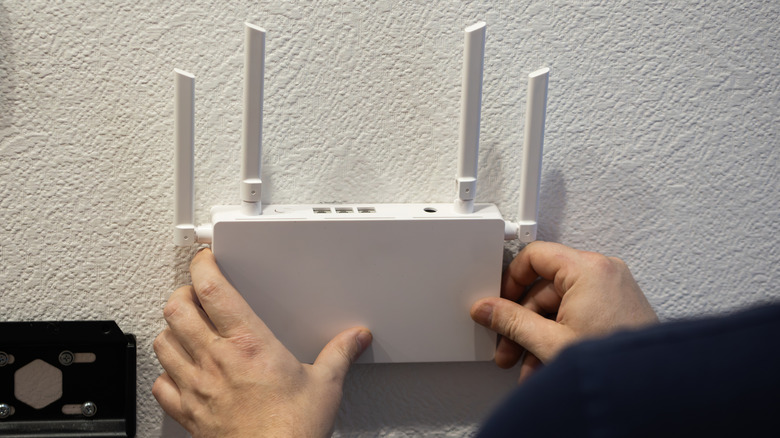Here's Why Unplugging Your Router Can Speed Up Download Speed
At first glance, the idea that unplugging a router can magically speed up your internet feels like one of those old-school tech myths, like blowing into a Nintendo cartridge. But there's real tech logic behind it. Routers are little computers, after all. They juggle connections, cache data, and allocate bandwidth in real time. Memory leaks and software bugs can accumulate over days or weeks, and your router starts dragging its digital feet.
Unplugging your router will force it to restart, wiping the slate clean. It flushes out cached data, closes background processes that never properly shut down, and forces the router to renegotiate a fresh connection with your ISP. That fresh handshake is often why you suddenly see faster download speeds after a restart. This is why corporate IT folks love to tell you to restart a device when things go wrong. It's the most proven trick in the book.
But performance isn't the only reason to reboot. There's also security. Routers don't just manage your Netflix binges and Zoom calls; they're a front door to your home network. And like any software-driven device, they get updates. When you reboot, you're giving the router a chance to install the latest firmware and security patches. Those updates can plug vulnerabilities, block known exploits, and tackle malware that can slow down your internet.
How and when to restart your router
There are several ways to restart your router, none of them complicated. The old-school method is as straightforward as it gets: unplug your router (and modem, if they're separate) from the wall. Wait at least 30 seconds for the internal memory to clear, then plug it back in. You'll know it worked once the lights stop their chaotic blinking and settle into their usual steady glow.
The modern method is even easier, provided your router came with a companion app (think Netgear Nighthawk, TP-Link Tether, or your ISP's branded app). Inside, you'll usually find a one-tap "Restart" button that sends the command remotely. This way, you don't have to crawl behind the TV stand or deal with that mess of cables. There's also a more universal, but slightly nerdier method via the router's web interface. Every router has an IP address (often 192.168.0.1 or 192.168.1.1). Type that into your browser, log in with your router's admin credentials, and look for the restart or reboot option.
You should restart your router regularly, even if you don't have issues with slow internet. Think of it as routine maintenance: Once a month is a good rule of thumb, though lighter internet users can probably stretch it to every couple of months. That said, there are clear signs your router is begging for a reboot. If your connection slows to a crawl, drops altogether, or your video calls start sounding like a broken robot, it's time, no matter how recently you rebooted it. You'll also want to restart after installing firmware updates on your router, or if you're troubleshooting persistent glitches like high latency.
What if a restart doesn't help?
If you're still wrestling with constant dropouts or slow speeds no matter how many times you reboot, you may need to reset your router instead. It's the nuclear option for wiping out any deep-seated bugs or glitches that may be causing your router to malfunction. A reset will restore the device to its original factory settings, erasing your Wi-Fi network names, passwords, and any custom configurations. That's why it should be your last resort, not your first instinct.
To reset manually, you'll usually find a tiny button on the back of the router. Press and hold it for 10–30 seconds (depending on the model) until the lights flash. Once it reboots, you'll need to set up your network again, including re-entering your ISP credentials and re-securing your Wi-Fi with a strong password. Many router apps or web dashboards also offer a reset option, but the result is the same: a clean slate. It's also smart to reset your router if you have major security concerns, such as if your network has been compromised or you've had to deal with malware. It's a bit more hassle than a simple restart, but a fresh start is sometimes the best option. And if a reset doesn't fix things, it's probably time to invest in a new setup. Just don't throw your old router out immediately if you do that, though, as there are many ways to put it to good use.


